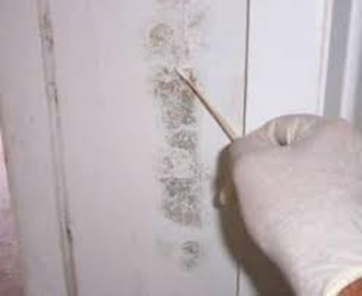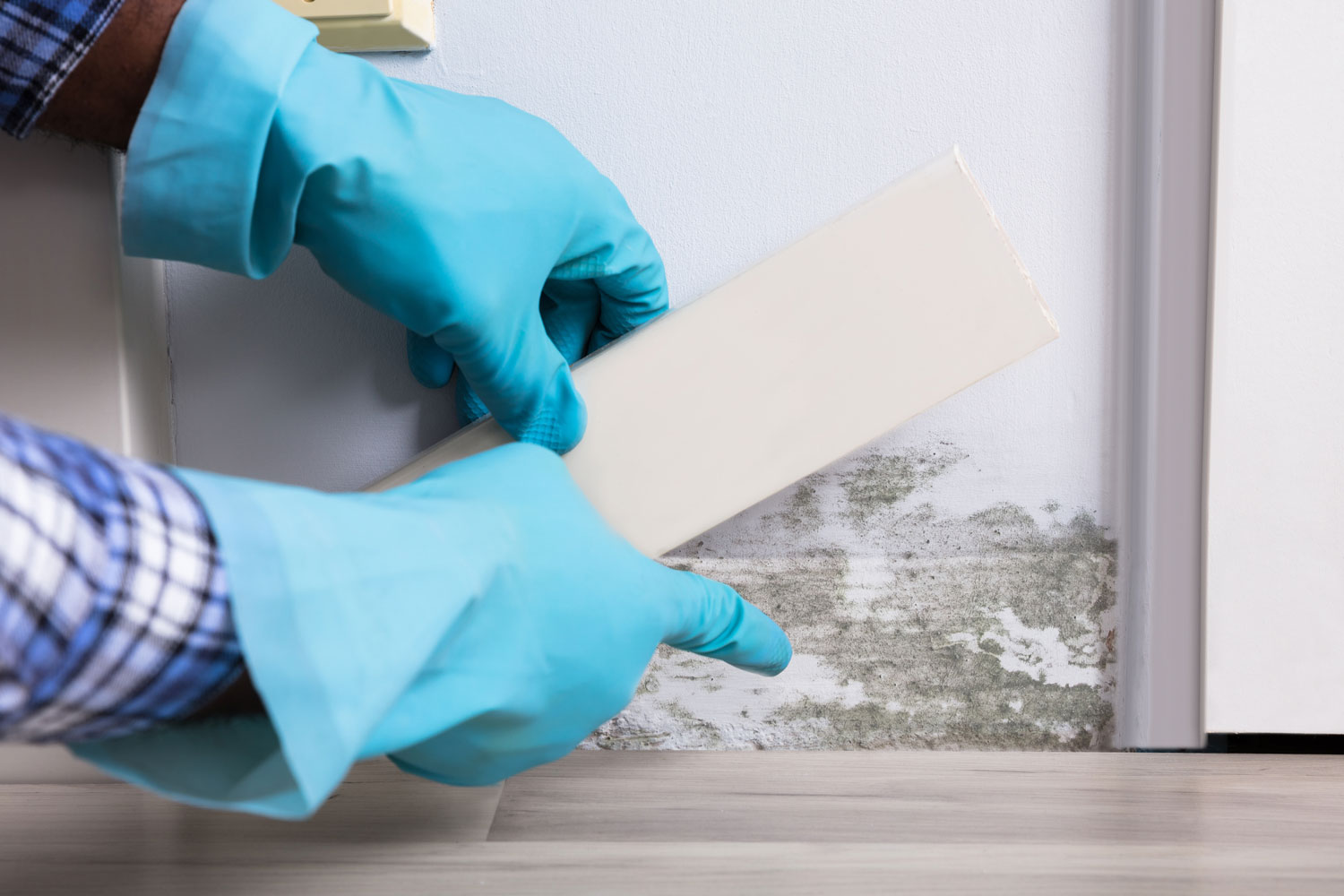Broadly speaking, mold testing is explained as taking a sample of either the air or a surface in an effort to discover if mold exists, what type of mold may be present, and what its concentration levels are. Water Mold Fire Restoration, 800-905-0277, is knowledgeable in the field for mold testing and remediation and can help you if you think you may have a mold issue.
Explaining Air Sample Mold Testing
The most common way to do air sample testing is by using a device called a “spore trap”. This device vacuums a known quantity of air through itself and across a sticky surface. Any particles and mold spores in the air will be ‘trapped’ on the sticky surface inside the spore trap. The spore trap is then sent off to a testing laboratory for analysis.
Whenever air sample testing is done there should be at least two tests, one inside your home and the other outside. The outside test is done to determine what molds and their concentrations are in the environment. Comparing the two results indicates whether or not the air inside your home has different types or concentrations. Mold is present everywhere and is not usually an issue as long as types and concentrations mirror what can be found in the outside air around your home.
Explaining Surface Sample Mold Testing
There are three common methods of surface sample mold testing:
- Bulk samples - for a bulk sample a piece of the sampled area is physically removed and sent to a testing laboratory.
- Swab samples – an item very similar to a cotton swab is rubbed across the surface to be sampled. The area is often a precisely measure area. These swabs are then sent off to a laboratory for testing.
- Tape samples – in this case a special clear tape is pressed against the surface and then removed. Hopefully any mold spores present will have stuck to the tape and the tape is then sent to the laboratory for analysis.
When these surface samples arrive at a laboratory they are then transferred to a glass microscope slide. A staining agent is applied to the slide that the mold spores will absorb. The spores can then be analyzed.

DIY Home Mold Test Kit Warning
If you think you have a mold problem and would like to waste some of your hard-earned cash, run down to the nearest big box store and buy a DIY mold testing kit. Here are several reasons why you should not buy a DIY mold testing kit:
A mold inspection is not a mold sample. Most DIY testing kits can deliver both false positive and false negative results. You use your kit, leave it sit around somewhere near where you think you may have a problem and then wait the recommended time for the collection to take place. Then you package it up and mail it to a lab. Did any outside contaminants make their way into your sample? Did the sample get contaminated during packaging? How about while it was in the mail? You just don’t know for sure, so can you really depend on the results?
Consumer Reports has said that home test kits are “Not Recommended”. They report that some kits leak and there are no expiration dates on the kits. Over time the media that they are packaged in could affect the accuracy and the reliability of the results.
There is no measure of airflow. Standards and guidelines in the mold testing industry refer to mold spores per cubic meter of air. DIY test kits have no way of measuring or controlling the amount of air that crosses the sample.
There is no control sample. Once you have your sample and the results, what do you compare it to? What is a lot of mold or a little mold?
No accredited laboratory certifications. Most DIY laboratories are not endorsed by any accredited agency. Often there is no chain of custodyconcerningthe transfer of the kit, acceptance of the kit by the lab, or critical data such as the date, time of analysis, or lab location.
What about dead mold spores? DIY kits don’t account for non-viable mold spores. But non-viable, or dead, mold spores can still affect your health. Not only that but molds such as Stachybotys, Chaetomium, and Ulocladium may not even show up in the results.
If you are looking for entertainment or a good children’s science project, a DIY home mold test kit could be the answer. Otherwise, hire a professional mold inspector from Water Mold Fire Restoration. We can be reached 24/7 at 800-905-0277 or by email at help@watermoldfire.net.








